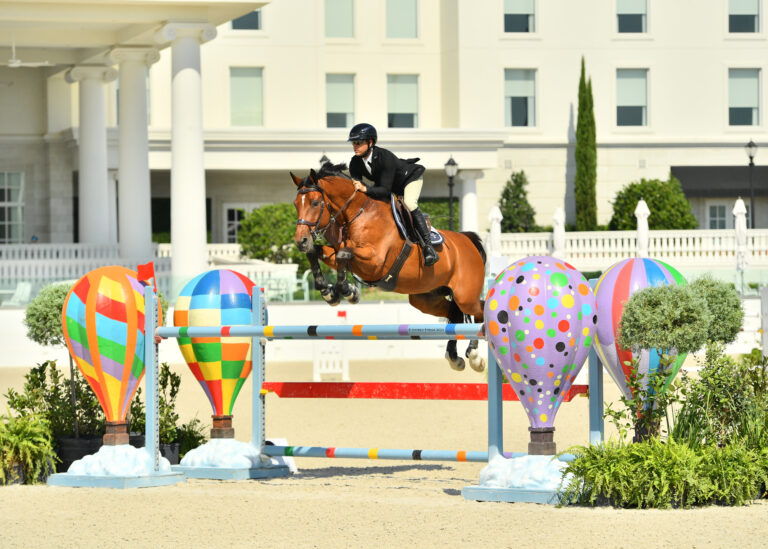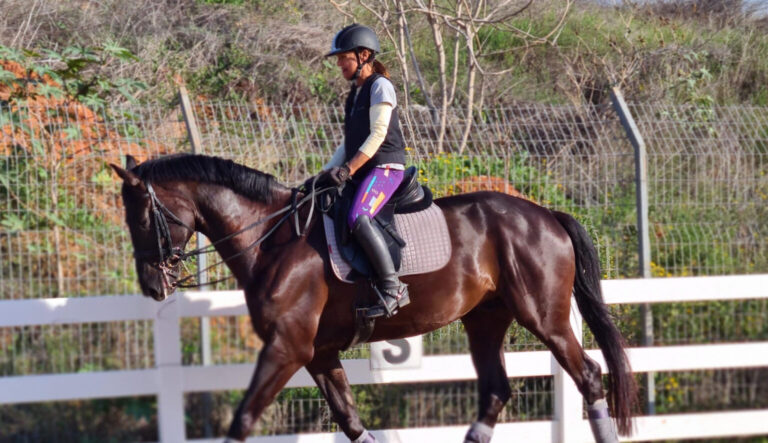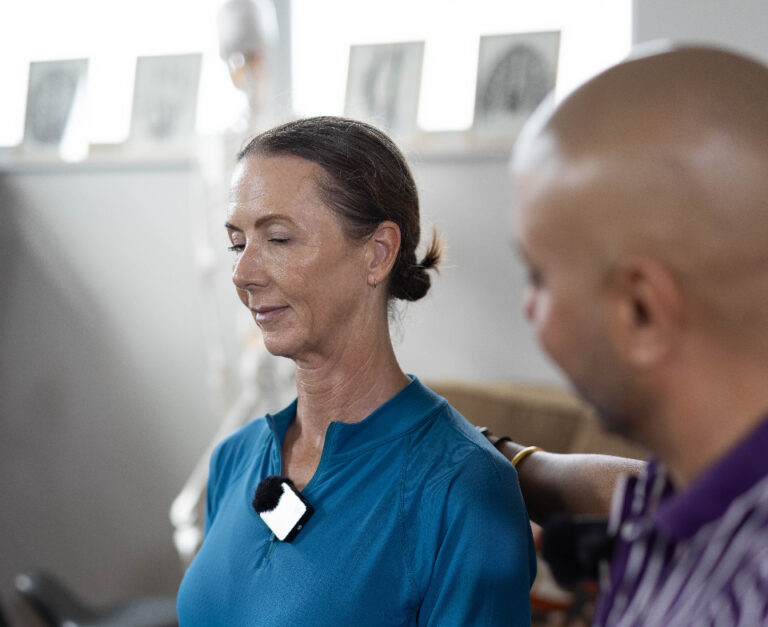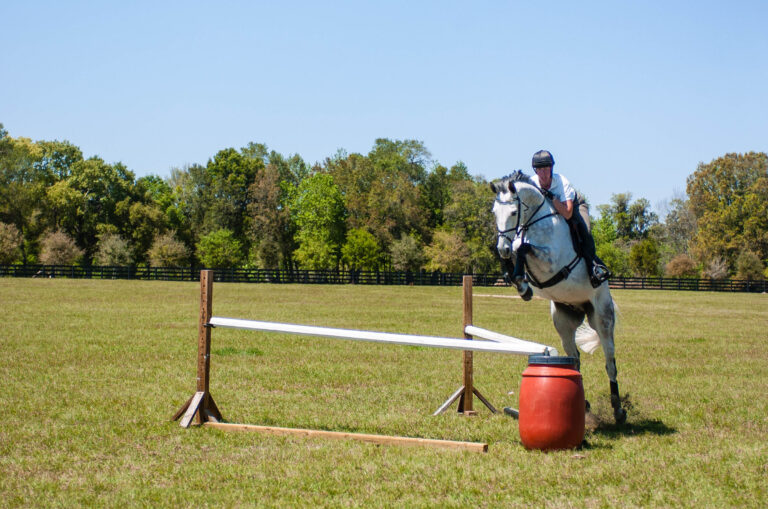Four-time Olympian Boyd Martin was quick to give memorable words of praise when riders excelled during one of the cross-country schooling sessions during Windurra Camp, a weekend educational camp held at his and his wife Silva’s facility in early August. “You’re a champion!” “You’re a freaking legend, mate!” “You’re a star! Give him a big pat and tell him you love him.” In addition to Martin’s positive coaching style, he offered stellar insights into how he approaches cross-country riding.
In this session, Martin instructed a Modified/Preliminary group of horse-and-rider combinations as they practiced several exercises around the cross-country course at the expansive Cochranville, Pennsylvania facility.
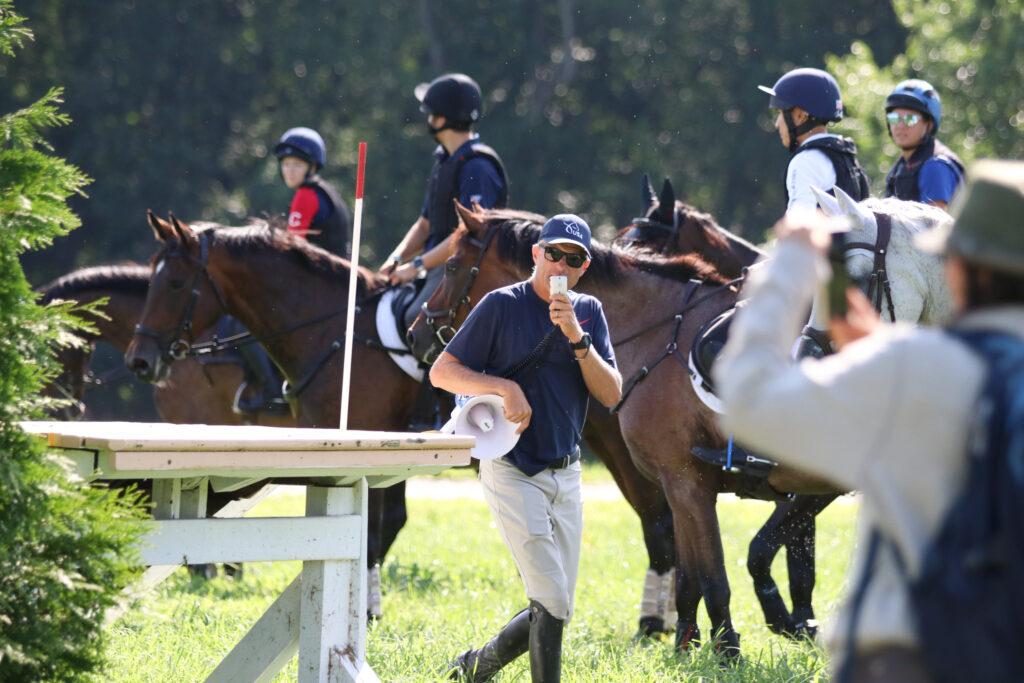
After warming up on the flat, the group’s cross-country schooling session began with a few small fences, including logs, coops, rolltops and cabins.
“We are getting the horses thinking about cross country, but these are not speed jumps,” Martin said. “It’s almost like a warm-up in the show jumping. We’re just going to hop over these fences nice and easy.”
Hollow Exercise
Once the pairs were in the cross-country mindset, they jumped two different lines into and out of a hollow complex to work on the horses’ rideability and balance. When jumping a fence into the hollow with the ground falling away behind it, Martin advised approaching the fence in a steady, slightly slower pace.
“To me, some of the harder jumps are where the horses are a bit uncertain where they’re landing,” Martin said. “With your body position, you might need to sit a little strong and stay back with your upper body as you approach these jumps.”
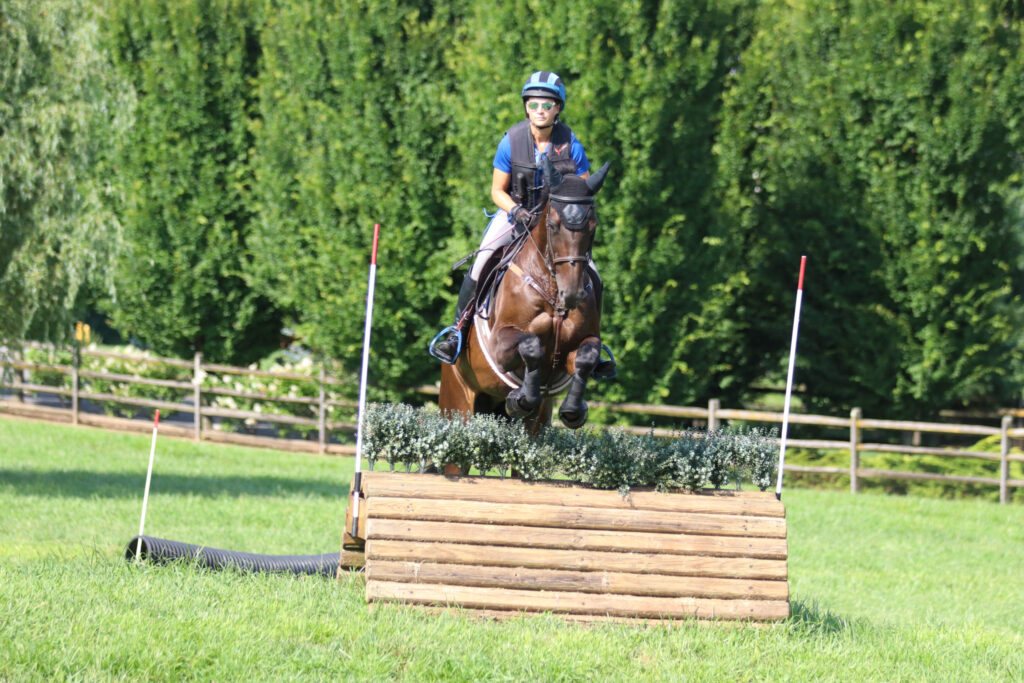
However, when going up the hill and jumping out of the hollow, he advised accelerating slightly and to keep the canter flowing to the fence rather than trying to add a stride to it. This usually makes for a smoother and more efficient ride. He also noted that it’s best to stay with your horse’s motion in case he jumps big over the fence out of the hollow.
For horses who wanted to get quick in the hollow exercise, Martin suggested steadying those horses to slow down their pace. On the opposite end of the spectrum with horses who were timid jumping the fences into the hollow, Martin encouraged riders to keep their legs on, especially at the base of the fences, and eyes up for the next fence. “As you’re jumping part A, try and get your horse’s eyes locked on part B,” he said.
While it can be tempting for riders to “help” their horses with their bodies as they jump, Martin encouraged quiet riding. “Try and keep your body as still as you can as you jump,” Martin said. If the pairs had awkward jumps over any of the hollow elements, he had them school the exercise once more to smooth out their rides.
First Water Complex Exercise
In the next exercise, Martin had the pairs jump a cabin on a mound followed by a right-hand turn to a small log into the water followed by five strides to a small log out of the water. Next, there was a right-hand turn around to a white skinny fence followed by five strides to a table in the water.
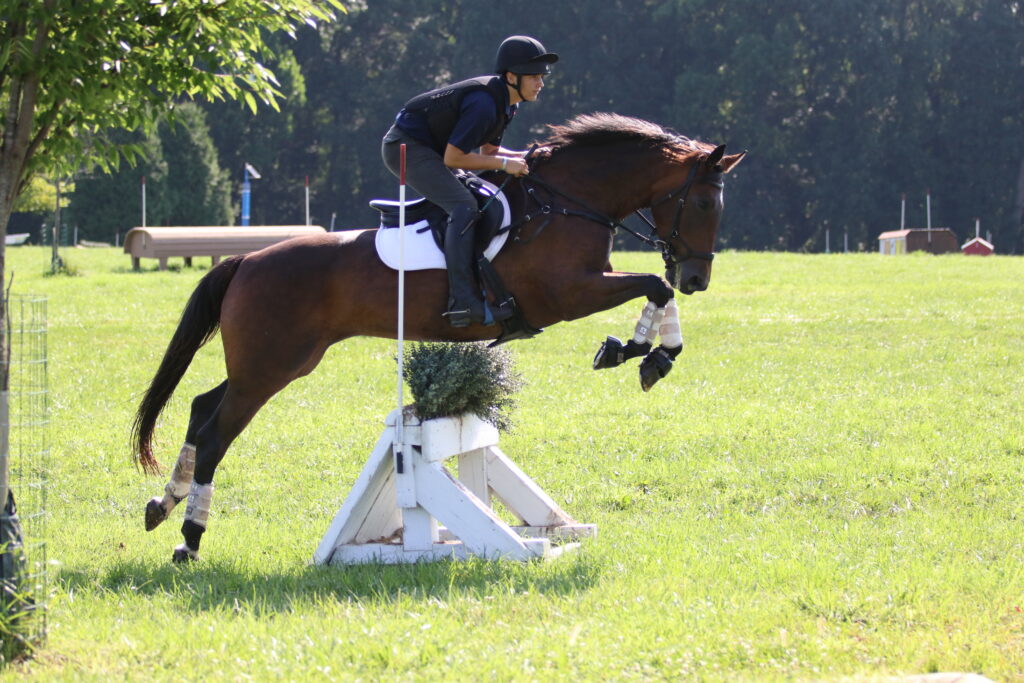
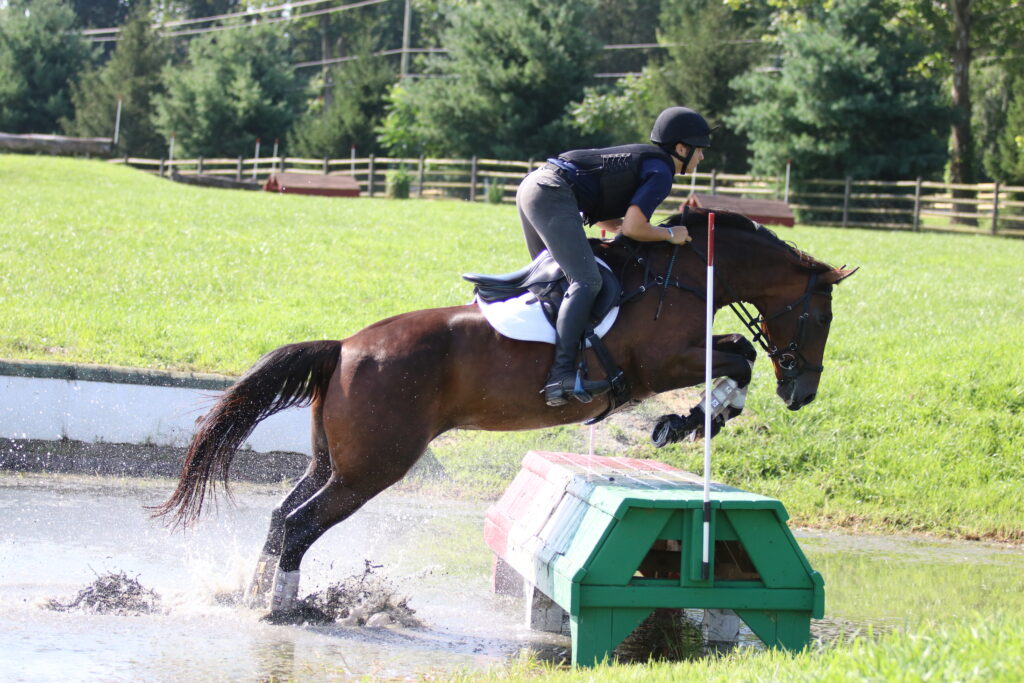
If riders got an awkward six strides in between the fences in the water, Martin had them ride the line again, land after the fences into the water and “boogie on,” keeping their legs on to easily meet the five strides. On the other hand, if riders found themselves trying to slow their horses down immediately before the second fences in the lines to make the five strides, he advised coming to the first fences in a steadier pace on their second attempt.
Individual Fences Exercise
For this exercise, the pairs jumped a table to a right-hand turn to another table. Next, they had a rolltop to a rolltop to a white table all on a wide, left-hand semi-circle.
For this series of fences, Martin wanted riders to treat them as if they were the first few jumps on a cross-country course. The goal was to jump the fences rhythmically out of stride without adjusting the horse’s stride too much to find a perfect distance.
“The art of doing nothing’s a hard thing,”he said. “You’re coming to the fence and you’re trying to not look for a long distance, not look for a short distance, but trying to catch them out of stride.”
Martin suggested not going “full blast” at the fences to only end up having to significantly slow down the horses shortly before each fence. He wanted the riders to find a happy medium with their gallop.
“In dressage when you’re in a medium canter, you can get the stride a little bigger to an extended canter or you can shorten the stride to a collected canter,” Martin said. “I like the idea of being in a medium gallop. I know that sounds weird, but it’s the idea that if I want to accelerate I can and if I want to steady I can.”
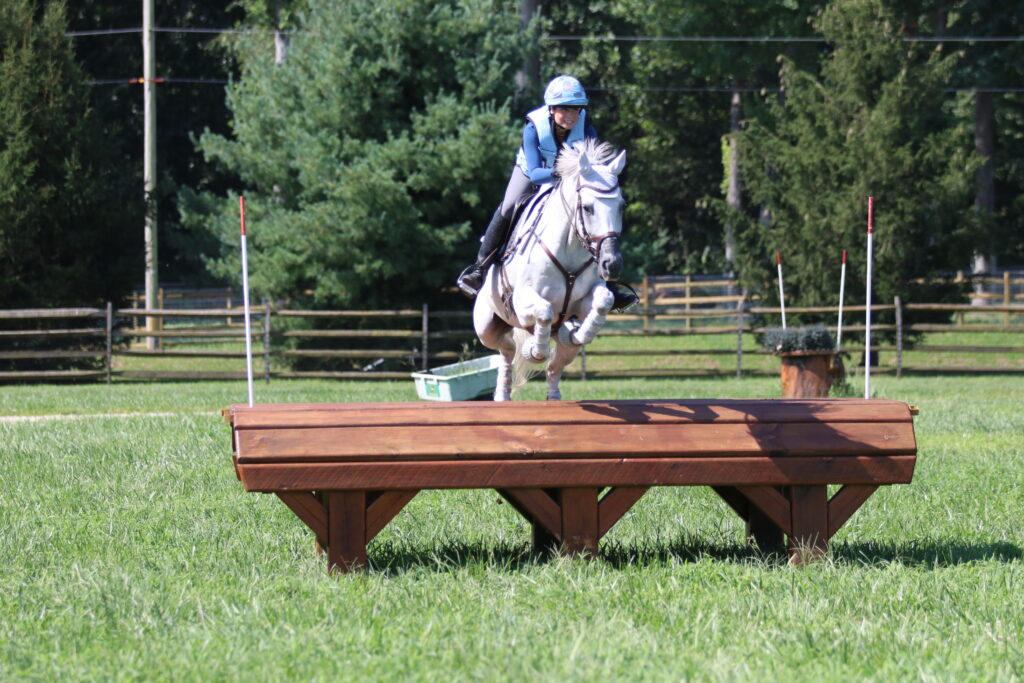
While the fences weren’t particularly challenging, Martin pointed out the importance of schooling single cross-country fences. “About 60% of cross-country courses are single fences, and it can be hard to make these single fences efficient and light,” Martin said.
For riders who are moving up the levels and jumping bigger fences, Martin said practice is key to gaining confidence. “Without scaring yourself, you’ve got to start getting comfortable at jumping decent sized fences,” he advised. “Even though you’re going fast and they’re big jumps, there’s got to be an element of calmness to your riding, and it should almost feel like it is happening in slow motion.”
For riders on greener horses, Martin reminded them to be more supportive with their aids and allow more time to present their horses to the fences.
If riders had a refusal or runout while schooling, Martin said it was “no big deal.” If needed, he had riders jump to an easier fence then return to the problem fence for a second attempt. White fences caused some minor issues during the schooling session. Martin believes that horses often get sticky or a bit nervous jumping white or partially white fences on cross-country fences due to their vision, so they may require more supportive aids on the approach.
Skinny Combination Exercise
Martin had pairs school the first rolltop (opposite direction) to part B of an angled-brush combination to the white table (opposite direction) six strides to a skinny fence.
With each of his cross-country schooling exercises, he explained that he likes to start off with an easy, forgiving fence in case riders get an awkward jump so they can make adjustments before the fences get more challenging.
For the table to skinny fence combination, Martin advised getting a balanced jump at the A element to arrive at the B element on a good stride. Staying straight and in the middle of the flags on the B element was key to practicing accuracy.
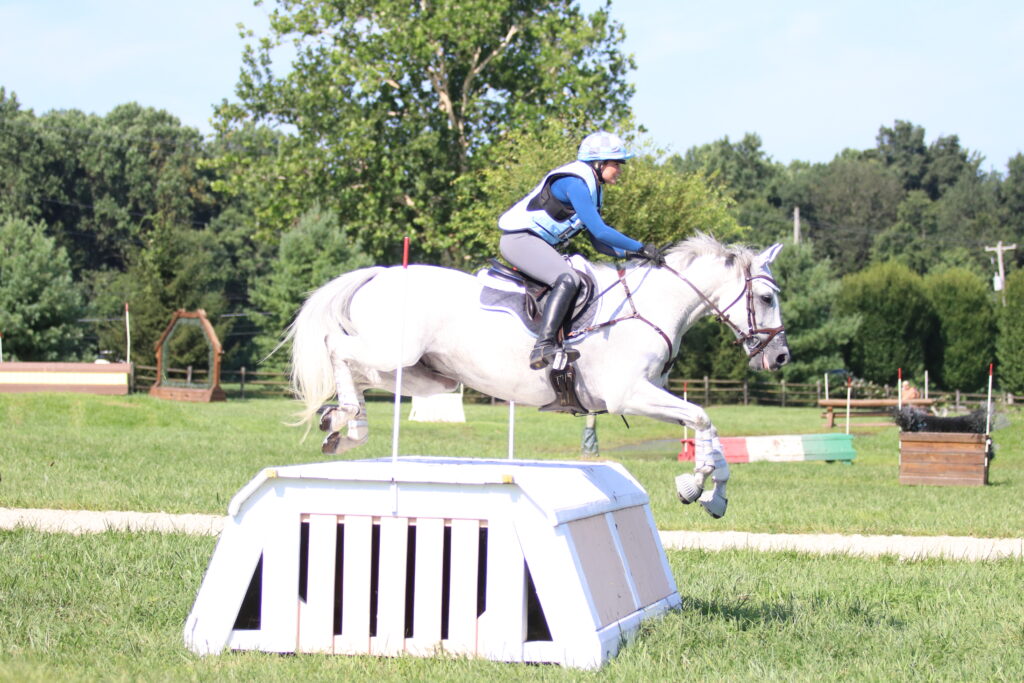
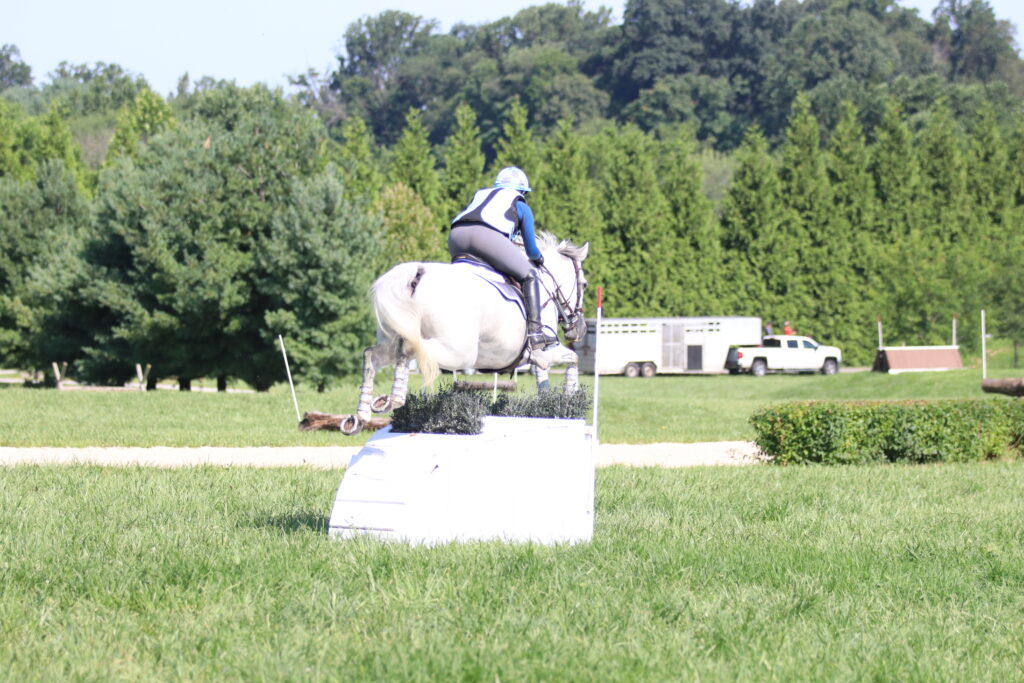
When one pair ran into issues at the skinny fence with runouts to the left, Martin initially had the pair walk up squarely to the skinny, letting the horse poke his nose through the flags on the front and back sides of the fence for a better look. Then, he had the pair angle the fence left to right and used a guiding rail on the left side. Martin advised not to use speed to get over the fence but to give an assertive ride and maintain correct body position.
Angled Brush Combination
For the next exercise, Martin had pairs come on the left lead to a table to a Trakehner followed by a right-hand turn to an angled brush one-stride. Then, they circled around to jump a table followed by six strides to an angled brush one-stride.
When pairs jumped the angled brush one-stride combination by itself, Martin advised riders not to turn too early, but to wait until they found a good line to the fences. He noted that angled brush fences are common at competitions, so he likes to include them in his cross-country schooling sessions.
“When I’m cross-country schooling, my goal is to never have a run out,” Martin said. “If there’s a way of jumping part C, then jumping part B to C then jumping A-B-C, I like that better than just having a crack at a hard combination and it going wrong. The horse knows what’s coming up, so it’s a bit of a cheat but it works well.”
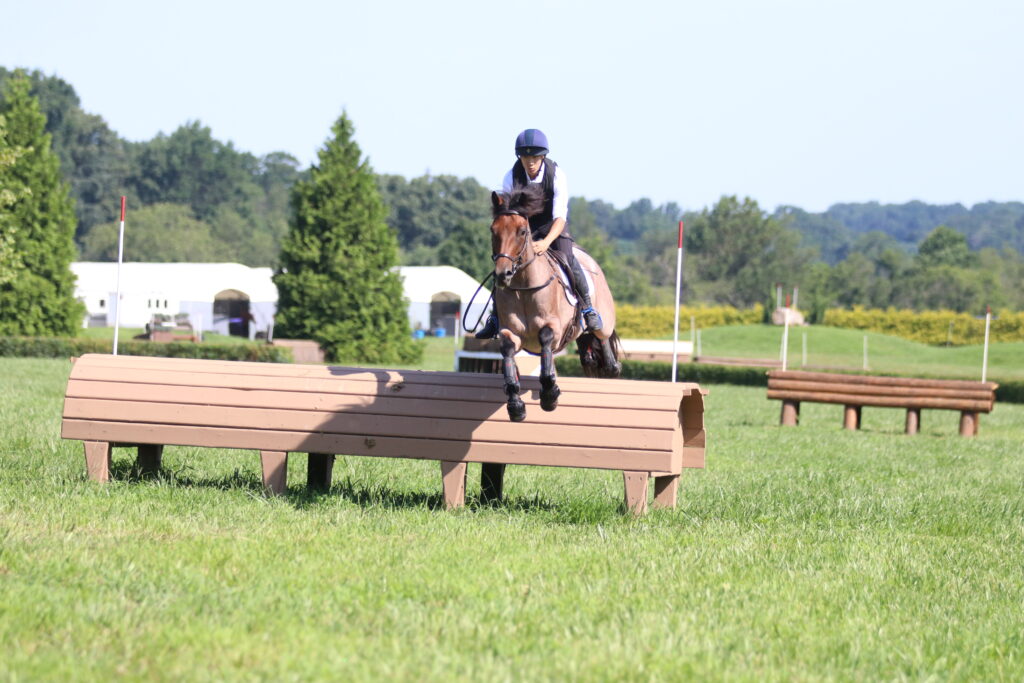
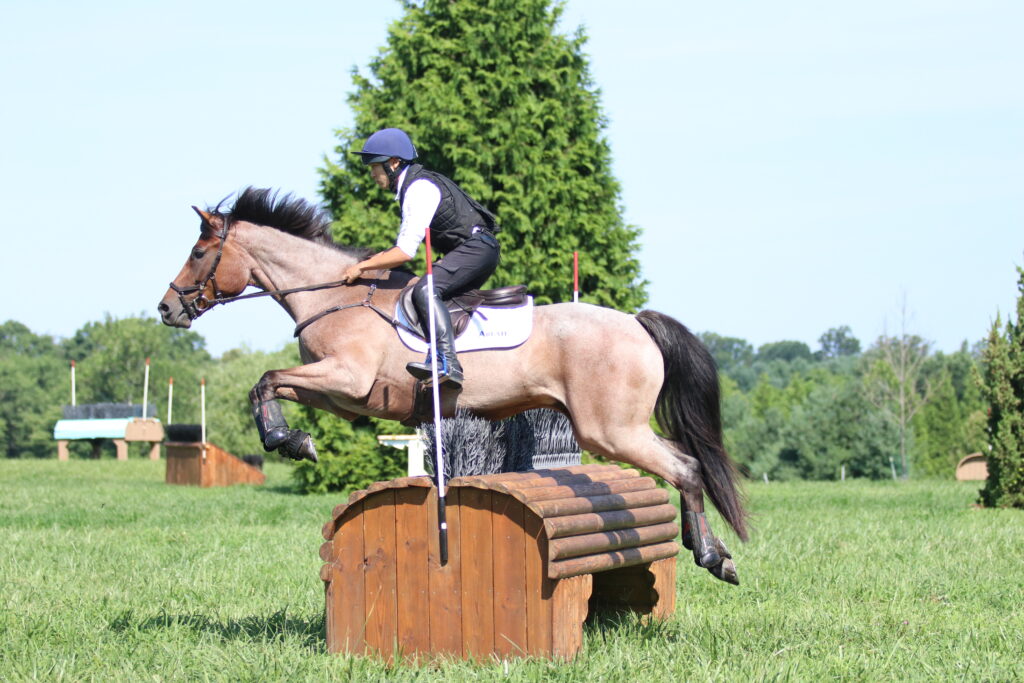
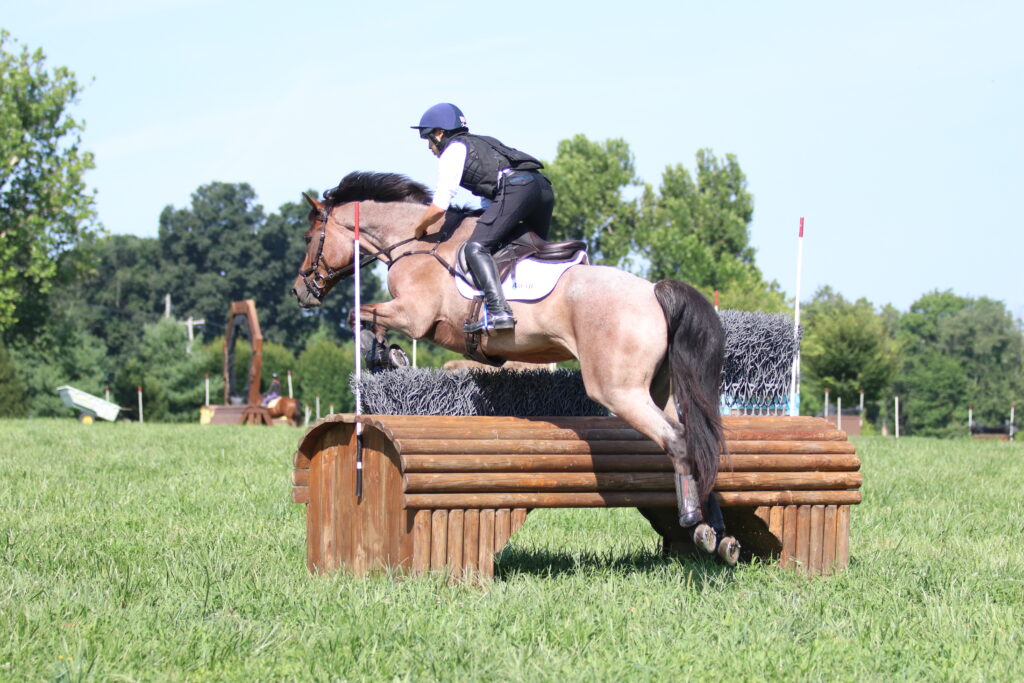
Coffin Exercise
Here, the pairs trotted over the ditch of a half-coffin (ditch to jump or jump to ditch depending on the direction) to familiarize their horses with it. Then, they cantered back the opposite direction over the ditch followed by two strides up an incline to the rolltop of the half-coffin.
“It’s much easier going from ditch to jump than jump to ditch, so I start the process this way,” Martin explained.
When the pairs did the half-coffin going from jump to ditch, Martin told riders to sit back for both the A and B elements in case their horses hesitated. If the horses did hesitate, he reminded the riders to have their legs on and be ready to tap with their whips for encouragement. After successfully schooling the half-coffin in both directions, the pairs moved on to a series of fences including a more challenging coffin, giving their horses the same kind of encouraging ride.
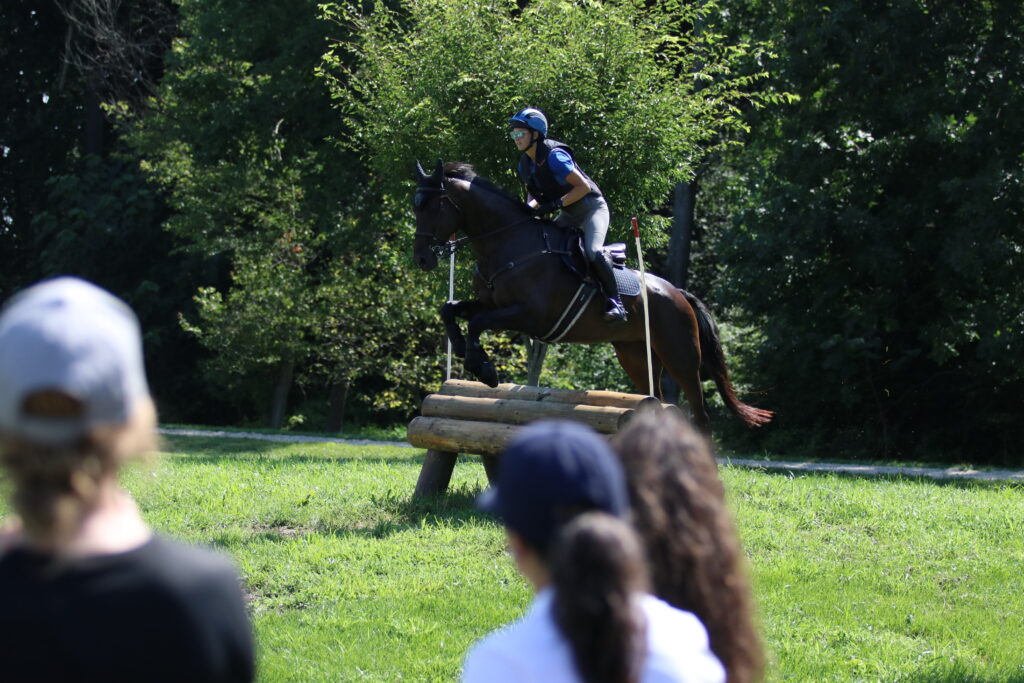
The pairs jumped a cabin fence on a five-stride bending line to a corner right-hand turn to either a rolltop or a hanging rail to a skinny. Next, it was a right-hand turn to the half-coffin followed by a left-hand turn to two small logs on mounds. They finished with a left-hand turn to the full coffin (A. Rolltop one stride downhill to B. a ditch to two strides uphill to C. a skinny).
For the longer stretches between fences, Martin had riders gallop on as if they were at a competition followed by a “downshift” in their horse’s canter to navigate the half and full coffins and changes in terrain. However, Boyd didn’t want riders to make adjustments to their horse’s stride too close to the fences.
“I want you to try and measure the jumps where you’re not adjusting him on the last stride or two, so you can slow down a bit sooner if needed,” he said.
When one horse was hesitant between A and B of the full coffin and got two strides into the one-stride distance, Martin had the pair do the combination again to get a bold one stride with the rider using a stronger leg aid backed up with a “tickle with the spurs” or a tap from the whip after the A element. “It’s obvious he’s a little unsure of that ditch, so we’ve got to train him that when he sees that ditch, he’s got to go,” Martin said.
Martin believes coffin fences over varied terrain are similar to the hollow exercise where the horses are unsure of where they are landing and need additional support from the rider’s aids.
Second Water Complex Exercise
Martin had the pairs jump a series of fences at a second water complex to close out the cross-country schooling session. Most of the pairs jumped the cabin fence left turn to a hanging rail into the water, then a right rollback turn to a chevron into the water to a short six strides to a skinny in the water. He adjusted the plan for some horses and riders based on how the session had gone for them so they could finish on a good note.
While Martin did ask the pairs to ride the chevron to the skinny line quietly for six strides, he cautioned the riders on strong horses to not underride the skinny fence and come to it underpowered. “Land and stay steady for six strides,” he said.
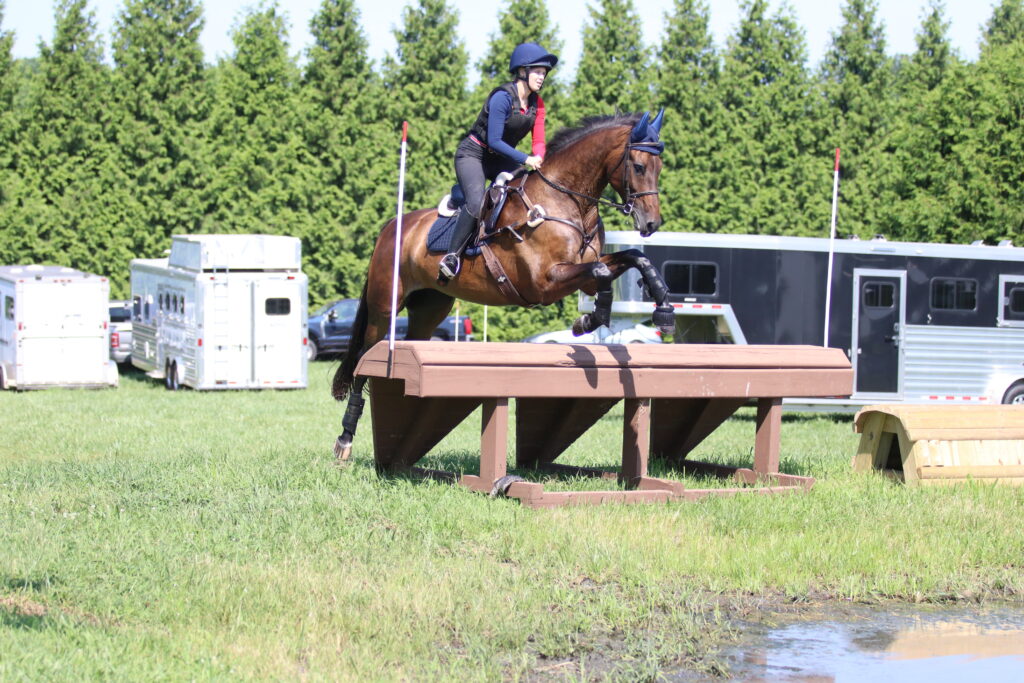
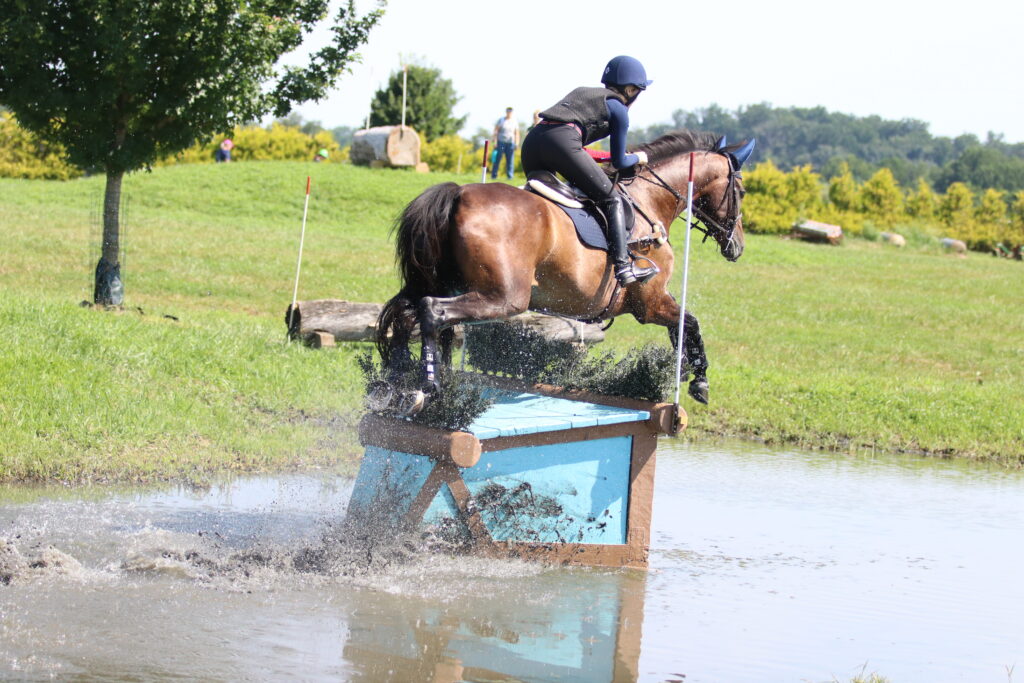
Another option for the chevron to skinny line was to make it a slight bending line. “Aim a little right at the first fence and then use a little bend to help you find a bit more room to the second jump,” Martin said.
For a rider who had an awkward jump at the skinny in the water, Martin encouraged her to be bold. “When you’re a little bit nervous, you’ve got to be powerful and aggressive in a short canter,” he said.
Final Insights From Martin
After all the pairs jumped successfully through the water complex, Martin concluded the session with some final notes for each of the riders on what they should work on going forward. He also recapped his cross-country schooling process, which includes:
- Jumping small fences quietly to get the horse thinking about cross country.
- Creating a small course of single fences and increasing the pace to a level appropriate for the horse.
- Breaking down combinations, starting with a single element and working toward jumping the full combination.
At the end of the day, Martin wants horses to have built confidence while schooling cross-country fences. He points out that the rider needs to be quiet and sympathetic to accomplish this goal.
“It’s not about [the rider] being aggressive or strong or brutal or anything like that, it’s about [the horse having] understanding and confidence,” Martin said.
He added that riders developing their cross-country skills are better prepared for competition if they have worked through difficult moments during schooling sessions.
“There’s got to be this practiced behavior of ‘I’m going to make it happen when things aren’t perfect’ because at the competition you can’t all of a sudden become that person,” Martin said.
All the pairs seemed to come away from the cross-country schooling session more confident. And the riders who had to show grit during less-than-ideal jumping efforts used the educational moment to better themselves. With Martin’s insights at Windurra Camp, the riders now have more skills in their cross-country toolbox for their next competition or schooling session.





